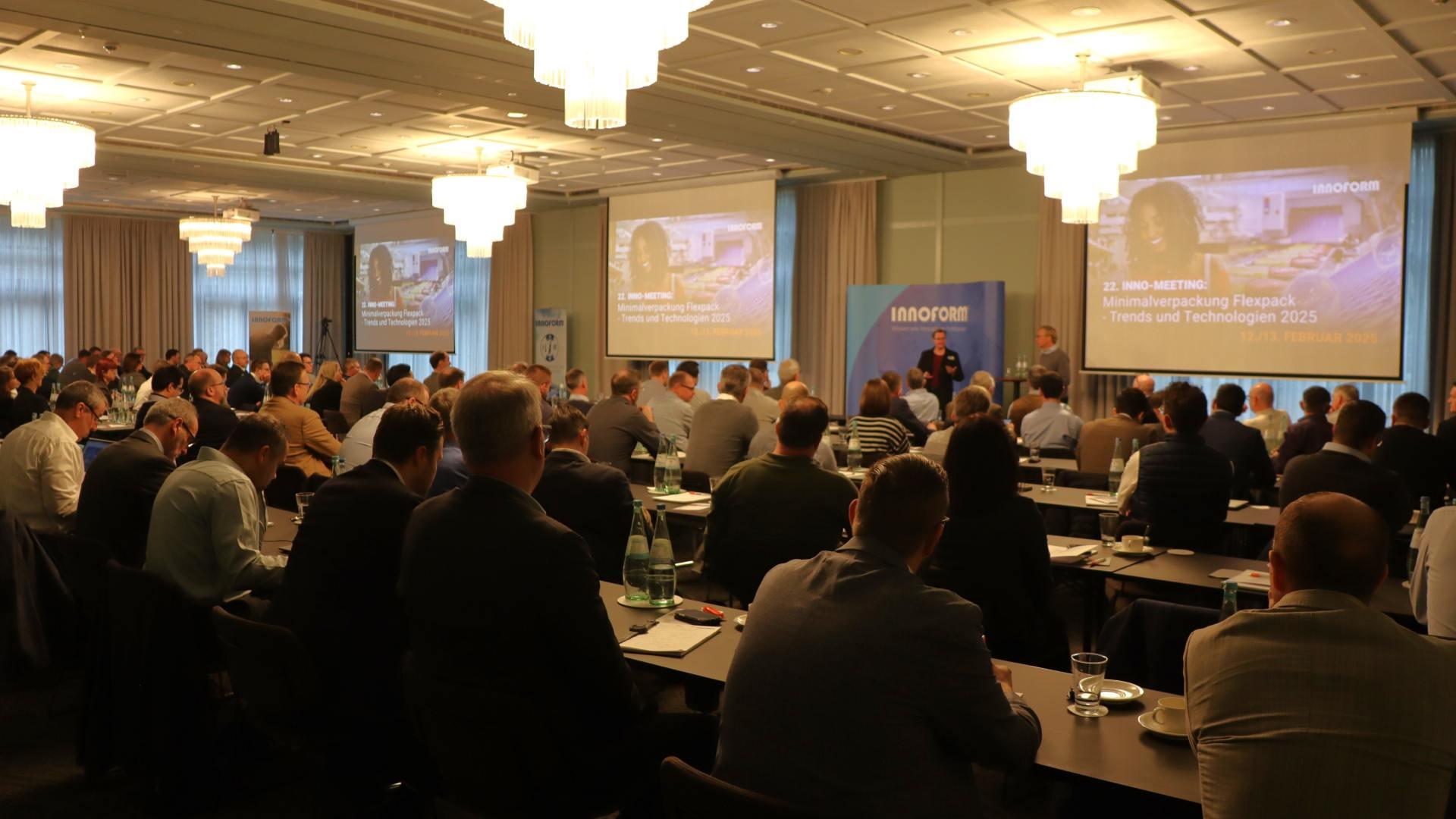Themed ‘Minimal Packaging Flexpack – Trends and Technologies 2025’, the 22nd Inno-Meeting in Osnabrück brought together leading experts from the packaging industry. In 16 high-level presentations, future-oriented developments were discussed, with a clear focus on future-oriented and sustainable approaches in the development of flexible minimal packaging.
Regulatory challenges and new materials
Dr Andreas Grabitz from FCMExperts provided a comprehensive overview of the regulatory challenges of 2025, in particular Regulation (EU) 2024/3190, which largely bans bisphenol A and other harmful bisphenols. The new PFAS limits of PPWR 2025/40 were also highlighted, along with the requirement for binding recycling rates, which will be gradually increased to 80% by 2038.
Ralf Küsters from LyondellBasell Industries presented alternatives to fluorinated processing aids. The products he presented can help to eliminate harmful PFAS compounds in the future.
Simone Schillo from BASF SE explained how the polyamide portfolio of BASF improves the recyclability of multi-layer packaging. Coextruded PE/PA films can be used to make packaging thinner and reduce the amount of material used without disrupting the recycling stream. This shows that packaging made from a single material is not the panacea.
Technological advances in recycling
Leonid Liber from Coperion GmbH presented new approaches for the recycling of plastic films. Film flakes with a low bulk density can be reliably and gravimetrically fed to the ZSK twin-screw extruder. There, the optimised shear profile reduces gel formation by up to 90 %.
Dr. Elisabeth Pinter from OFI explained the analyses behind the testing of food packaging recyclates. The decontamination efficiency of the processes is verified by chemical analyses and bioassays to detect contaminants and ensure the safety of the materials.
Innovative packaging concepts
One highlight was the presentation by Naoko Kobayashi from Mitsubishi Gas Chemical, who presented the novel barrier adhesive Maxive. This development could replace many conventional barrier layers and significantly facilitate the recycling of packaging.
Dr Dirk Heukelbach from TOPAS Advanced Polymers GmbH presented the advantages of cycloolefin copolymers (COC) for sustainable packaging solutions. Thanks to their high temperature resistance and excellent barrier properties, they enable high-performance monomaterial packaging. COC are fully recyclable in PE and PP streams.
Dr Heiko Schenk from Projectif presented the Triple Bubble concept, which allows a 50% reduction in film weight without compromising on properties.
Conclusion: on the road to sustainable packaging solutions
The 22nd Inno-Meeting made it clear that the packaging industry is on the verge of radical change. Regulation, technological advances and innovative materials will shape the industry in the years to come. The solutions presented show that sustainable packaging is possible without sacrificing quality and functionality – a decisive step towards a more environmentally friendly packaging future. The highlights provide an excerpt from the symposium; a detailed continuation will follow in issue #7 of Pro Flexconvert.

